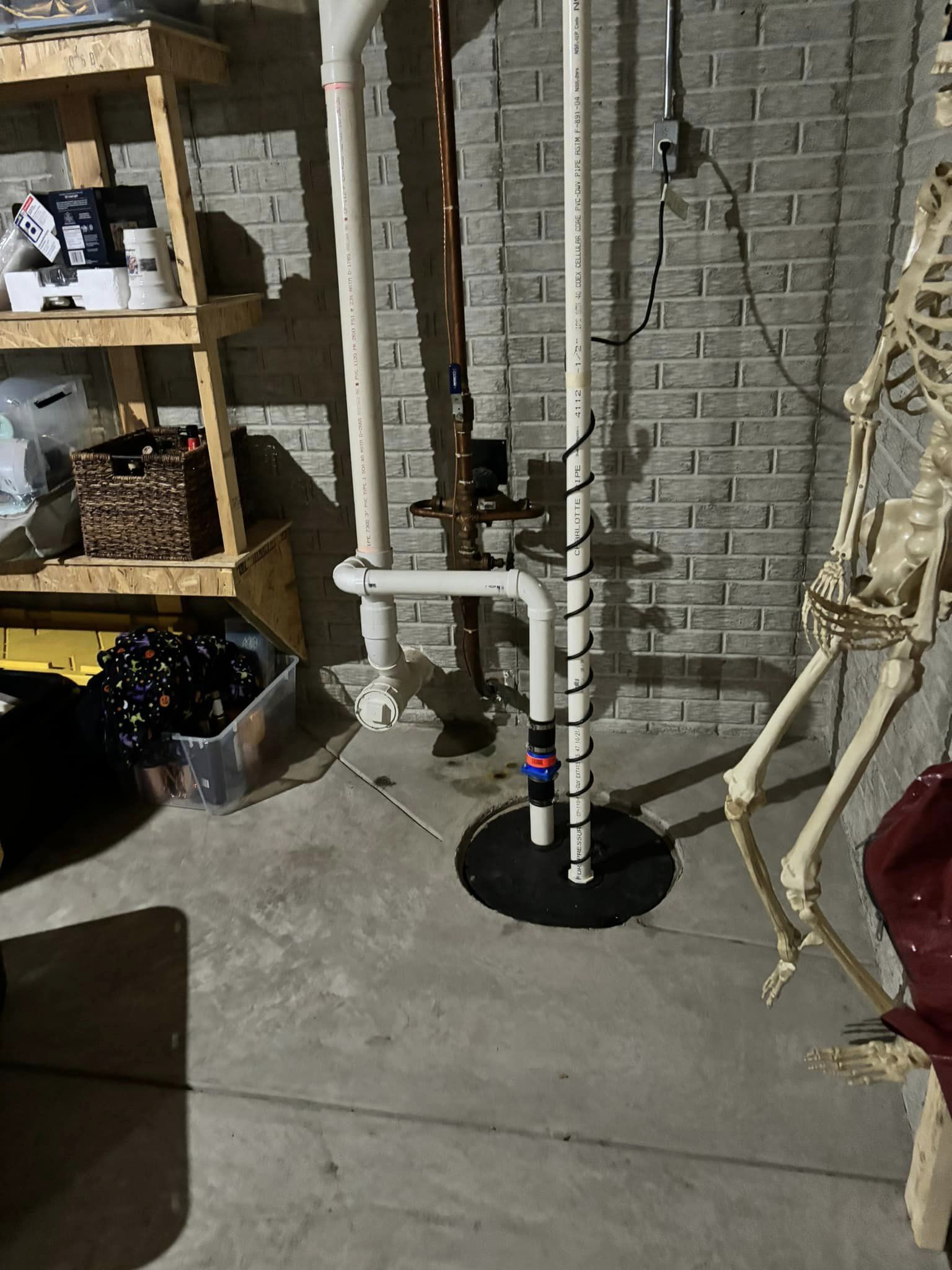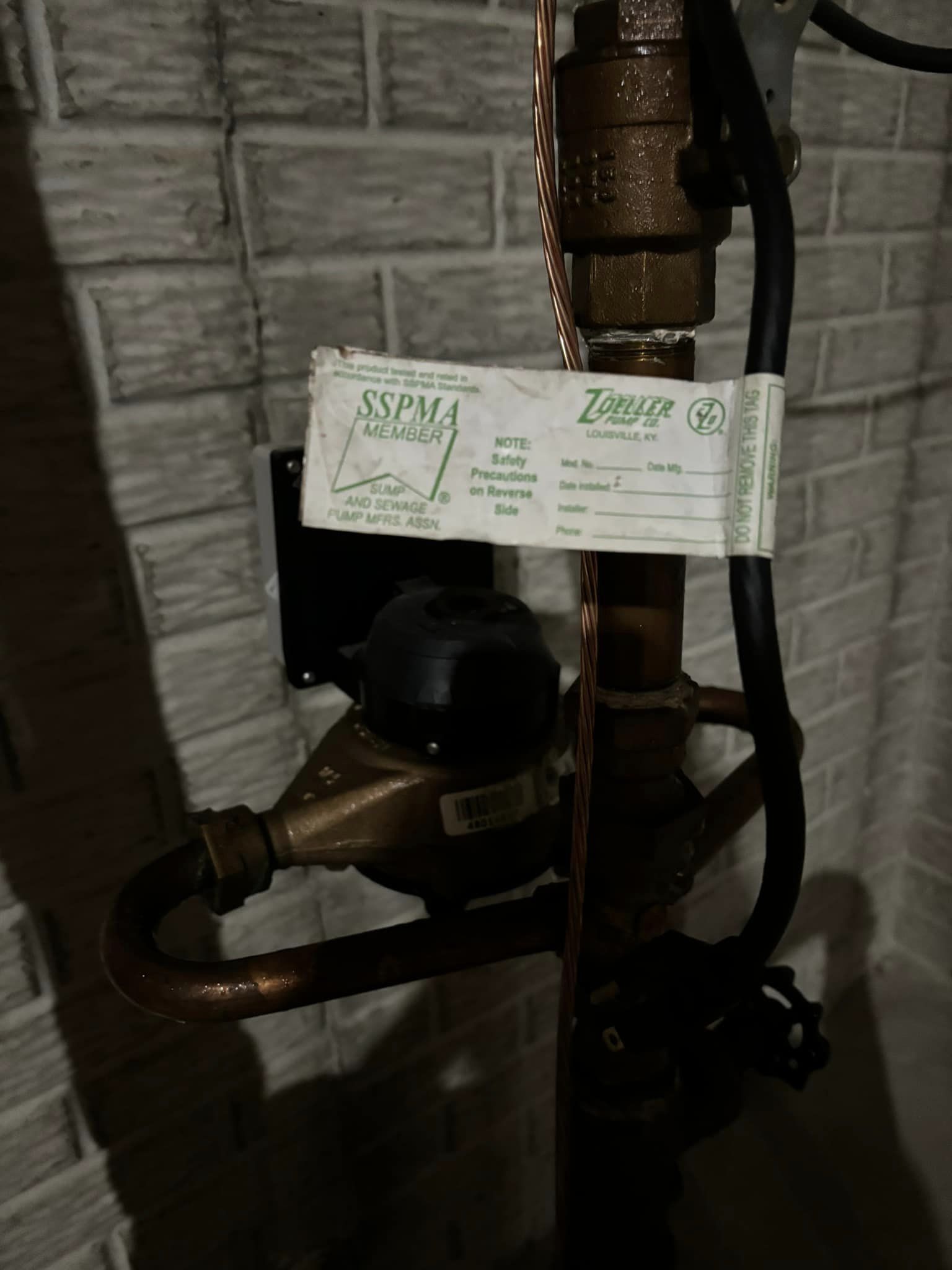How can I determine if my floor drain issue is caused by a Grinder pump or an Ejector pump labeled Zoeller Pump Company?
8 months ago
Last Updated: October 24, 2024
Last night my floor drain started acting up, so I called a drain cleaning company to come over this morning. They quickly pinpointed the problem and identified a faulty grinder pump. I did some investigating and discovered that the pump could also be an ejector pump, as there’s a label from the Zoeller Pump Company on it. Now I’m not sure which one it is.
I’m hesitant to open it up myself because I’m pretty sure the crock is full 🤮 and I’m currently out of town. From what I’ve read, as long as the discharge pipe is at least 2″, it doesn’t necessarily have to be a grinder pump. I believe the vertical discharge pipe meets that requirement.
Any guidance or suggestions would be greatly appreciated. Thank you so much in advance.


Is that only a sump pump? Or does waste go into it as well
That’s a great question that will help figure out the type of pump needed to remove things.
It appears that has a waste line being fed on the left side.
Definitely has a separate vent pipe for waste. The sump may have open venting.
It seems like this is a sealed pit, most likely used for black water devices. It could be a stuck float or a faulty pump causing the issue. I’ve encountered instances where a float got stuck due to toilet paper wads. Chances are, it’s a sewage ejection pump. Unlike sewage ejector pumps, sewage grinder pumps are equipped with cutting blades to grind raw sewage into a slurry before pumping it out through the discharge line.
What’s unusual in your case is that typically there are shut-off valves on both pieces of PVC to facilitate maintenance and prevent sewage from flowing back into the pit.
This explanation seems pretty thorough. So, if the pump is for house sewage (not just ‘sump water’), it’s likely a grinder style/type. Maybe there’s a label on the top of the pump tank with a model number? I remember installing one before and it came as a complete package similar to what we’re examining. It was about a 40-gallon barrel type equipment with all the necessary components already in it. I had to connect a backflow valve and I believe I did install two disconnect/isolation valves as you suggested for maintenance. They’re built to last a long time, I believe.
Oh, there’s a check valve on the left side (black piece) which acts as a one way valve. The other pipe is an air vent that remains open. Looks like a proper setup based on what I’ve seen.
Totally overlooked the vent haha it was still early 🤣
OMG my backup ended up including the toilet and my standing shower. After I unclogged the floor drain with a metal coat hanger, all the water from the shower and toilet came up through the drain. So, yesterday I went back down there and found another big mess with more water and fecal matter. I was pretty upset last night, but my son and I managed to clean everything up and sanitize it. Checked this morning and thankfully it’s dry for now, so hopefully, nothing else comes up. If it does, I’ll have to call my warranty company to snake it 🤦🏽♀️
Have two sump pumps, both areas were dry, so the water came up through a floor drain in my laundry room.
Make sure your sump pump is connected to either your interior or exterior drain tile system to manage rainwater and waterproofing. The sump pump should discharge water into your yard, as per Chicago suburbs regulations, without affecting the floor drain.
I’m not entirely sure, but what I do know is that there was a bunch of feces in the laundry room last night that came through the floor drain. Even though both of my sump pumps are actually sump pumps, I heard one releasing water this morning and it runs down my driveway. So I really doubt it was a sump pump issue. One sump pump is in my laundry room and the other one is in a second bedroom closet downstairs.
No that one back I think was sewer related – a bunch of poop and toilet paper came through the floor drain. The previous owners must have missed a link on the drain cover and that’s how a lot of it ended up on the floor.
Hey , do either of those sump pumps handle plumbing water like from the basement bathroom drain, laundry, or sink?
Did it rain last night when you had the poo water coming up the drain?
You probably need a check valve (it stops city sewage water from backing up from the city lines into your home) and/or your drain lines cleared out to your city drain or septic field due to a partial blockage. A plumber would need to come out to verify.
My son just mentioned the same thing, it seems like an ejaculation pump. Now I have to figure out where that is because my inspector informed me they were both sump pumps 🤷🏽♀️
Those alarms only activate during rainfall, and I can even hear the one in the room going off since my room is directly above it.
Are you aware of whether the floor drain connects to any of the sump basins? It’s possible they are not linked.
If you need to pump sewage to a pressurized sewer main, it’s best to go with a grinder pump. But if you’re pumping to a septic tank or gravity flow sewer main, you’ll want to use a sewage ejector pump. Ejector for septic, grinder for pressurized sewer. For city septic systems, either may work, but more info can be found here: https://www.haoshpump.com/difference-between-sewage-pump-and-grinder-pump/#:~:text=The%20trade-off%20is%20that,of%20up%20to%20750%20feet.
‘t take any chances with this. Get a new pump installed right away. If you’re on a city sewer system, go for a grinder. If you have a septic tank/field, opt for an ejector. It seems like this property is connected to a city sewer system, so a grinder is the way to go.
If it’s just the basement plumbing, they can hold off on using any fixtures that drain into it until they can replace it. But if it’s rain or ground water, then it’s definitely a priority.
There’s a waste line connected to ‘s property, running from above. Ground water lines would typically be located beneath the basement floor and emptied through a 2″ pipe to the outdoors.
‘s ejector pits need an air vent, which is why the second pipe serves as one. Any waste from above will connect to the sewer line that goes out through the wall. This is evident in the photo where the drain pipes tie into the sewer line exiting the wall.
If the waste lines exited the house under the concrete floor, there would be no need for a pit to pump it out, as everything would naturally flow out under the floor to the sewer or septic field.
In the photo, you can observe the sewer line passing through the foundation wall, indicating that the sewage drains through the wall rather than under the floor.
Just to clarify, the red part is the air vent. The purple section carries sewage and waste water from the home, positioned above floor level, either to a sewer or septic field. The yellow part contains grey or black water from above that flows into the same purple exit. Lastly, the green section is responsible for pumping water in the basement, located below the sewage exit point of the home, up and into the purple line to remove it from the house.
I’m thinking that since there’s a check valve in the discharge line, it might be a grinder pump.
Hey, that line you see there is actually where the pump discharges. Take a look at the fitting on the stack and you’ll see a one way valve on the line.
We’ll replace it soon. The crock in the basement bathroom is only for a toilet and sink since everything else from upstairs is above sewer grade. If the pipe from the crock is 2” or larger, you may not need a grinder – an ejector could be sufficient. What do you think?
If it’s just for a basement bathroom, then it’s probably just a sewage ejector pump.
M53
https://www.ferguson.com/content/trade-talk/tricks-of-the-trade/sewage-pumps-vs-grinder-pumps
Before investing in a new one, make sure to check if there are any rocks causing the blockage at the bottom.
Definitely go with a sewage ejector.
Oh man, that’s a crappy situation! I think you should follow the plumber’s advice and get them to fix it for you. 😂😂😂😂
I’m a plumber. It’s connected to sanitary, so it’s likely a sewage pump. If the cord is hot, unfortunately the next step is to unplug it, remove the lid, and check for any blockages in the impeller. This is more common than the pump burning out, usually caused by wipes or feminine products. Another possibility is that toilet paper and other debris are weighing down the float, preventing it from turning on. If the float is clear and the impeller spins freely, then it’s likely that the motor is burnt out and it’s time for a new pump.
⬆️⬆️ great response ⬆️⬆️
You should really hear what this guy has to say!
Thank you so much for getting back to me, . Your response was exactly what I was looking for!
Hey , do you have a moment for a quick message?
Go for it, !
Has been sent
Just trying to figure out if is the one with the pipe wrapped in the cord and the one with the fernco is the out?
The cord is wrapped around ‘s vent. The discharge valve is a check valve. The pipe from the bathroom goes under the slab into the crock.
Thanks a lot, !
That’s an ejector pump. Consider replacing it with a Zoeller 264 and swapping out the check valve for a glue-in ball/check combo. This upgrade should keep everything running smoothly for years to come.
No content
That is a grinder pump.
Yes, there’s a distinction.
Utilize a grinder
A grinder pump is perfect for raw sewage because it grinds everything up and pumps it away more reliably than a standard sewage pump. Effluent pumps handle grey water from sewage, while a sump pump simply pumps out water.
Mentions that a grinder pump is not suitable for a septic system because the particles become too small and seep into the field instead of decomposing in the tank.
Typically, they are utilized to elevate the grade for connection to the city sewer.
You’ll find a tag on the pump that displays the model number.
When it comes to DIY, you gotta roll up your sleeves and dive in. But if you’re more of an armchair type, just call the professional and book an appointment. There are a lot of variables to consider, so avoid tackling it on the weekend when the parts store is closed. Especially if you’re out of town.
Make sure to inspect the float switch. I’ve seen plenty of cases where only the switch was faulty.
Remove the old pump, take it to the Pump Store, and ask for their recommendations. Trust me on this one. It’s always best to start by consulting a local pro. If you receive conflicting information, we’re here to assist you.
If you don’t have a bathroom in the basement, I’m not sure why this would be a grinder pump. My guess is that you have a washing machine on the first floor that’s connected to the ejector pump in the solar system, as shown here.